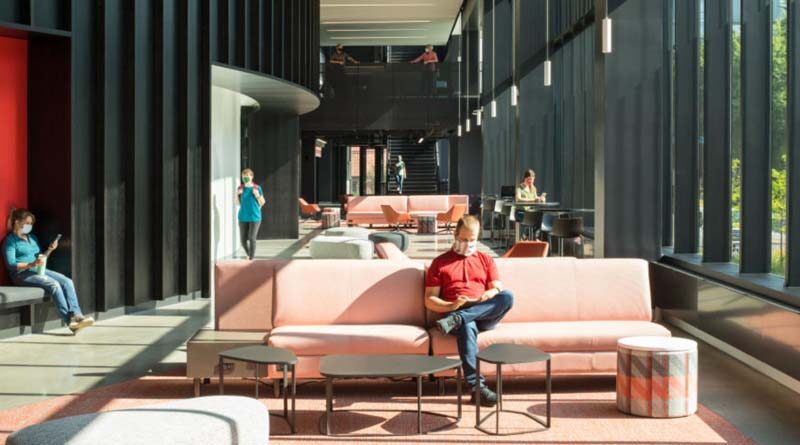University of Minnesota Completes $83M Health Sciences Venue
By SCN Staff
MINNEAPOLIS—The Health Sciences Education Center at the University of Minnesota Twin Cities is now complete.
The $83 million HSEC is the hub for all the university’s health professional school and was designed and built to promote interprofessional education and interaction, as well as foster a culture that prioritizes student and faculty well-being.
Spanning more than 200,000 square feet, HSEC is a unique addition to the U of M, already home to one of the most comprehensive health science centers in the nation. It’s also an asset that will benefit all Minnesotans, since the U of M teaches 70% of the state’s health professionals, including physicians, nurses, dentists, pharmacists, veterinarians and public health professionals.
“The new Health Sciences Education Center is much more than a building; it is a catalyst for change as we prepare the next generation of health care professionals,” said Mark Rosenberg, MD, vice dean for education and academic affairs in the Medical School, in a statement.
To welcome health science students to HSEC, the Office of Academic Clinical Affairs and the Office of the Executive Vice President and Provost hosted a Welcome Week in mid September, with treats, giveaways and prize drawings. As part of the University’s efforts to mitigate its spread of COVID-19 on campus, physical distancing practices and facial coverings were required at all events.
“By preparing ourselves and our students for the future, we will have a significant impact on our state, our communities, and our personal and professional growth, all of which are closely aligned with our responsibility as a land grant University,” said Jakub Tolar, MD, PhD, vice president for clinical affairs, in a statement.
To meet the academic needs of today’s health science students, HSEC is home to:
- state-of-the-art classrooms, designed for interprofessional learning with active learning and small group teaching spaces;
- the Center for Health Interprofessional Programs, which allows health professions students a space to connect, collaborate, network and develop;
- innovation and learning support through the Health Sciences Library and Wangensteen Historical Library of Biology and Medicine, which includes a rare book collection, virtual and augmented reality, makerspace and more to support problem-based learning;
- simulation and immersive training that allows health professional students to train in sophisticated, real-world care settings, trainer stations, briefing/debriefing rooms, and actor prep areas, and;
- student support and services.
Over the summer, HSEC was used in collaboration with the School of Public Health, Medical School, and the Medical Reserve Corps to assist the Minnesota Department of Health in COVID-19 contact tracing.
Also, M Simulation used HSEC spaces this past summer to train incoming residents and students on personal protective equipment in clinical environments. These are just the earliest examples of the building’s multipurpose usability and transformative potential for healthcare education.
“HSEC exemplifies the University’s commitment to academic and educational excellence,” said Executive Vice President and Provost Rachel Croson, in a statement.
“It will provide space for interprofessional education and relationship-building and will serve as a place where formerly distinct components of knowledge can be connected into an interrelated whole. Interprofessional collaboration is the future of health care, and this space is further demonstration of how Minnesota is creating that future.”
Minneapolis-based Perkins and Will and Connecticut-based SLAM designed HSEC and Kansas City-based JE Dunn served as the contractor.

